
Discover the Enchantment of Lo Manthang Village
Experience the majestic charm of Lo Manthang Village, a cultural and natural treasure in the heart of Nepal's Mustang region, perfect for adventurous travelers.
Nestled in the breathtaking landscapes of the Mustang region, Lo Manthang Village offers a unique blend of rich culture, stunning architecture, and adventure for every traveler. This ancient walled city, once the capital of the Kingdom of Lo, invites you to explore its vibrant traditions, intriguing history, and majestic surroundings. Whether you're trekking through the Himalayas or immersing yourself in the local Tibetan culture, Lo Manthang is a must-visit destination that promises unforgettable memories.
A brief summary to Lo Manthang Village
- Lo Manthang, 33100, NP
- Visit website
- Monday 12 am-12 am
- Tuesday 12 am-12 am
- Wednesday 12 am-12 am
- Thursday 12 am-12 am
- Friday 12 am-12 am
- Saturday 12 am-12 am
- Sunday 12 am-12 am
Local tips
- Visit during the Tiji Festival in May for a vibrant cultural experience.
- Prepare for altitude; acclimatization is important for a comfortable visit.
- Respect local customs and dress modestly when visiting religious sites.
- Hire a local guide to enhance your experience and understanding of the region.
- Bring cash, as not all places may accept cards or have ATMs available.
Getting There
-
Car
If you are traveling by car from Jomsom, head north on the main road towards Kagbeni. After about 9 km, you will reach Kagbeni. From Kagbeni, continue on the road towards Lo Manthang, which is approximately 30 km away. The road can be rough, so be prepared for a bumpy ride. Ensure to check the vehicle's condition and bring enough fuel, as refueling options are limited in Upper Mustang. The scenic drive will take you through beautiful landscapes and small villages.
-
Public Transportation (Jeep or bus)
From Jomsom, you can take a shared jeep or bus heading to Lo Manthang. These vehicles typically leave in the morning hours from the Jomsom bus station. The journey takes about 4-5 hours, depending on road conditions. Make sure to ask the driver to drop you off in Lo Manthang, as some jeeps may stop at other villages along the way. The cost for a seat in a shared jeep is usually around NPR 2000-2500 per person, but prices can vary, so confirming the fare before departing is advisable.
-
Trekking
For those looking for an adventurous route, consider trekking from Kagbeni to Lo Manthang. This trek takes approximately 2-3 days and offers stunning views of the Himalayas and unique landscapes. Start your trek by heading out from Kagbeni towards Jharkot, then continue to Muktinath and finally reach Lo Manthang. Make sure to arrange for a guide or join a trekking group, as navigating the trails can be challenging. Be prepared with adequate gear, food supplies, and check permits required for trekking in Upper Mustang.
Discover more about Lo Manthang Village
Iconic landmarks you can’t miss
Golden Fish stone
8.3 km
Discover the Golden Fish Stone, a serene historical landmark in Chhonhup, Nepal, where rich heritage meets tranquil beauty.

नेपाल सीमा प्रारम्भ
15.8 km
Discover the rich history and breathtaking beauty of Nepal Simar Praram Bh, a historical landmark in Zhongba County, perfect for cultural enthusiasts.
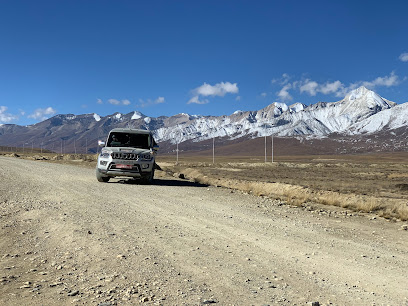
Mustang Caves
28.4 km
Discover the Mustang Caves: A breathtaking blend of natural beauty and ancient history in the heart of Upper Mustang, Nepal.
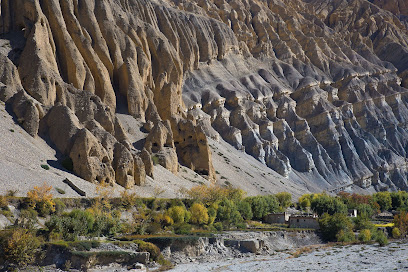
Dolpo-Sangda Trijunction
44.8 km
Discover the breathtaking beauty and rich culture at Dolpo-Sangda Trijunction, a hidden gem in the heart of the Himalayas.

Tilicho Lake
56.3 km
Experience the breathtaking beauty of Tilicho Lake, one of the highest lakes in the world, surrounded by majestic Himalayan peaks.
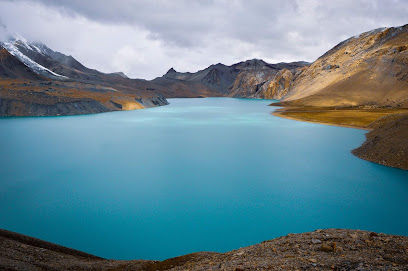
PRAKEN GOMPA
56.9 km
Experience tranquility at Praken Gompa, a stunning Buddhist temple in Tanki Manang, surrounded by the majestic Himalayas and rich in spiritual heritage.
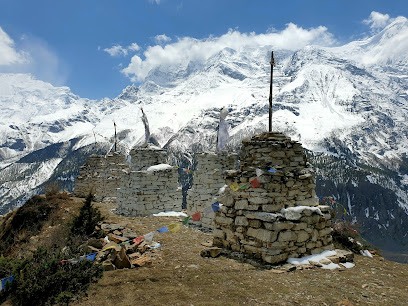
Tilicho Hotel
58.0 km
Discover the perfect blend of comfort and adventure at Tilicho Hotel in Tanki Manang, your gateway to the Annapurna region's breathtaking landscapes.

Hotel Yeti, Manang
58.0 km
Discover the enchanting Hotel Yeti in Manang, where comfort meets adventure amidst breathtaking Himalayan landscapes.

Annapurna I
63.8 km
Discover the stunning Annapurna I, a peak that captivates adventurers and nature lovers with its breathtaking views and rich cultural experiences.
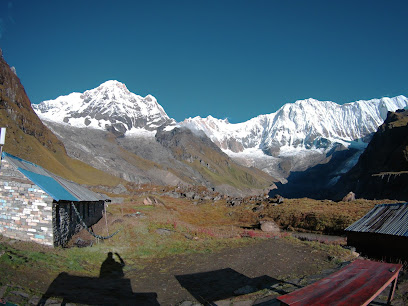
Green Lake
64.8 km
Explore the serene beauty of Green Lake in Pisang, a perfect retreat for nature lovers and outdoor enthusiasts seeking tranquility and stunning views.
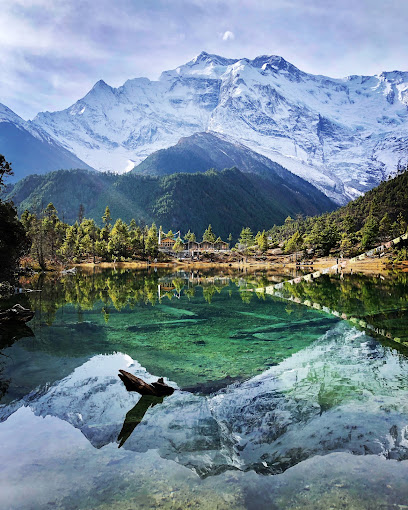
Himalayas
65.0 km
Explore the enchanting beauty of the Himalayas, a majestic mountain range offering adventure, culture, and breathtaking landscapes across five countries.

Annapurna
66.5 km
Explore the breathtaking Annapurna mountain range from Narchyang, a cultural gem in Nepal offering unforgettable trekking adventures and stunning vistas.
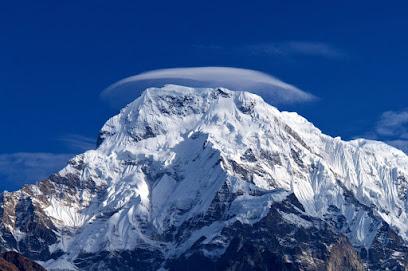
Nemjung
66.9 km
Explore the breathtaking heights of Nemjung, a stunning mountain peak in Nar, Nepal, for an unforgettable adventure amidst nature's beauty.

Titi Lake
67.4 km
Uncover the hidden beauty of Titi Lake in Kunjo, Nepal—a serene destination for nature lovers and adventure seekers.
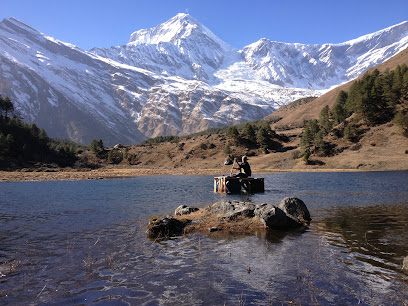
Dhaulagiri I
70.3 km
Explore Dhaulagiri I, the majestic peak of the Himalayas, offering breathtaking views and thrilling trekking adventures in Nepal's stunning landscapes.
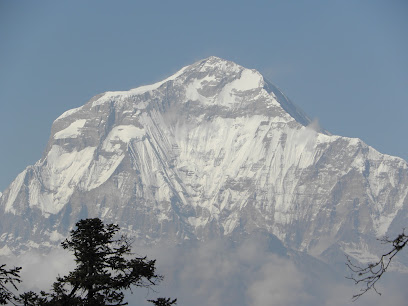
Unmissable attractions to see
Thubchen Gompa
0.0 km
Discover the tranquility of Thubchen Gompa in Lo Manthang, a historic Buddhist temple offering profound spiritual experiences amidst breathtaking mountain scenery.
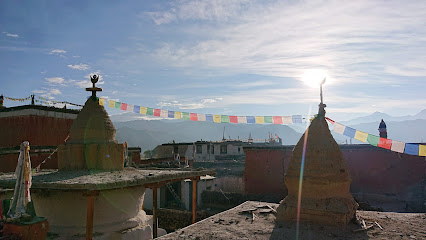
Royal Palace
0.1 km
Explore the Royal Palace in Lo Manthang, a stunning architectural gem showcasing the rich cultural heritage of Tibetan royalty.
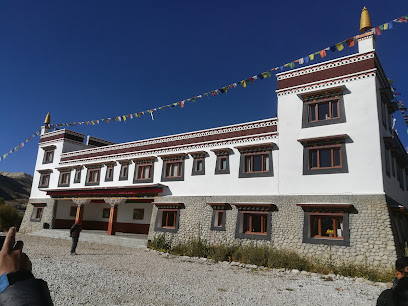
Nichung ,lomanthang
0.7 km
Explore the breathtaking landscapes and rich cultural heritage of Nichung, Lo Manthang, a hidden gem in the heart of Nepal's Mustang region.

Lomanthang hot spring
2.9 km
Discover the rejuvenating Lomanthang Hot Spring in the heart of the Himalayas, a perfect blend of relaxation and cultural immersion.
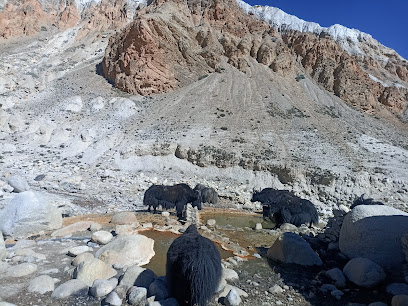
Nyamdok
6.4 km
Explore Nyamdok, a captivating historical landmark in Chhonhup, Nepal, where rich culture meets breathtaking scenery.
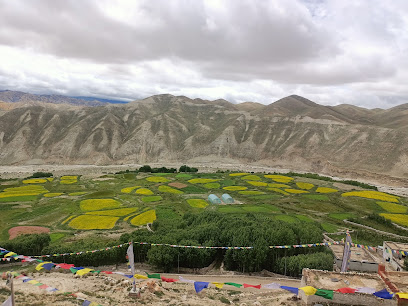
Zhong Cave
6.5 km
Discover the enchanting beauty of Zhong Cave in Chhoser, Nepal—a natural wonder with breathtaking formations and rich geological history.
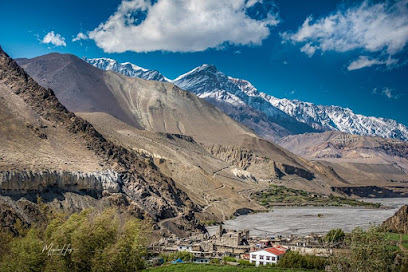
Upper Mustang, Nepal
6.5 km
Explore Upper Mustang, Nepal's hidden gem with breathtaking landscapes, rich Tibetan culture, and ancient monasteries.
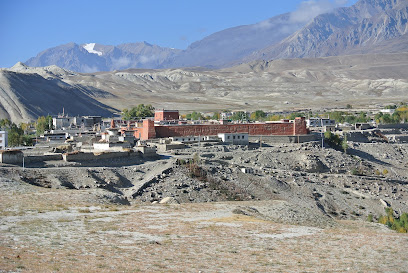
Upper Mustang Trek
8.5 km
Experience the breathtaking beauty and rich culture of Upper Mustang Trek, a hidden gem in the Himalayas renowned for its stunning landscapes and ancient traditions.
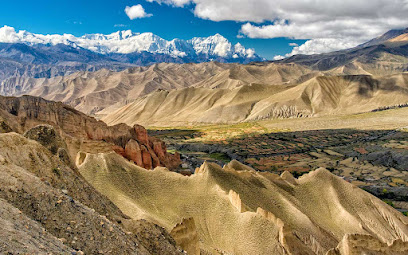
Jhong Cave Lo Chhoser
9.0 km
Discover the captivating Jhong Cave Lo Chhoser in Mustang, Nepal, where history and nature intertwine in a breathtaking mountain setting.
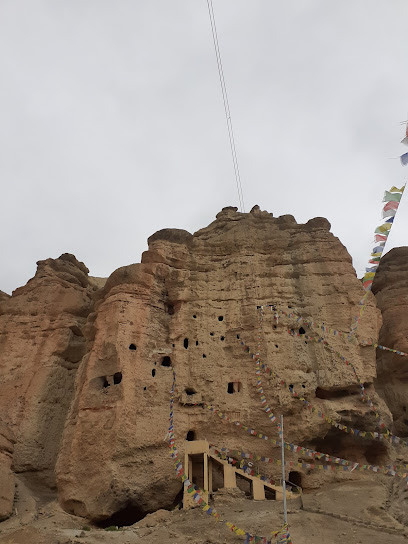
Jhong Cave
12.6 km
Discover the captivating history of Jhong Cave in Upper Mustang, Nepal, where ancient stories and breathtaking landscapes converge.
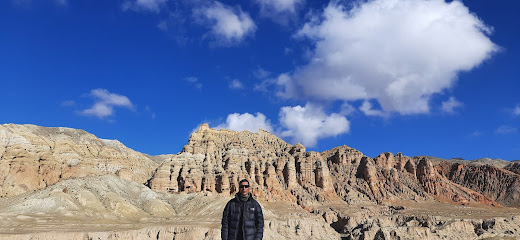
Cave monastery
13.0 km
Discover the serene beauty and rich history of the Cave Monastery in Surkhang, a spiritual haven nestled in the breathtaking Himalayan landscape.
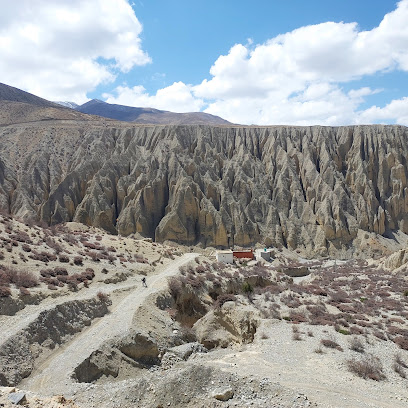
Ri thoen-pa view tower
25.1 km
Discover the breathtaking Himalayan views from the Ri thoen-pa View Tower, a serene escape in the heart of Kali Gandaki Corridor.
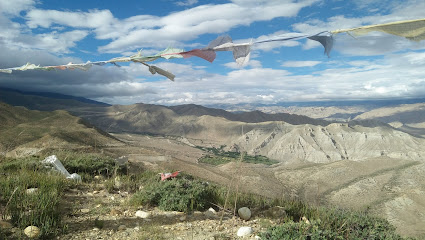
Chungshi Rangjung Cave
26.4 km
Explore the peaceful Chungshi Rangjung Cave in Chhusang, a serene place of worship surrounded by breathtaking natural beauty in Nepal.
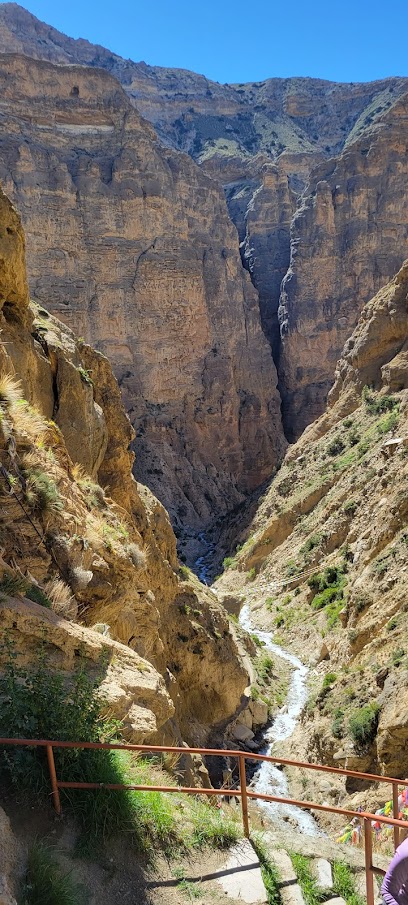
Chele Village
30.7 km
Experience the rich culture and stunning landscapes of Chele Village, a hidden gem in Upper Mustang, Nepal, perfect for adventure seekers and cultural enthusiasts.
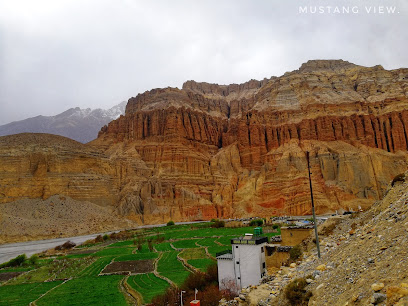
Damodar Kunda
31.0 km
Explore the spiritual serenity and breathtaking beauty of Damodar Kunda, a revered pilgrimage site nestled in the majestic Himalayas.
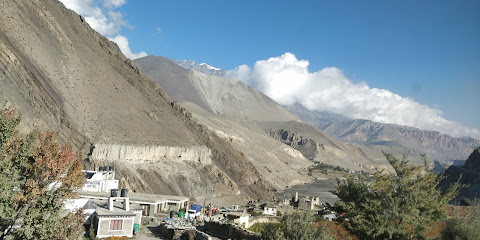
Essential places to dine
Muskan restaurent
0.1 km
Experience authentic Nepali cuisine amidst stunning Himalayan views at Muskan Restaurant in Lo Manthang.

Lamanthang,upper mustang
0.1 km
Experience authentic Tibetan cuisine amidst breathtaking Himalayan scenery in Lamanthang, Upper Mustang.
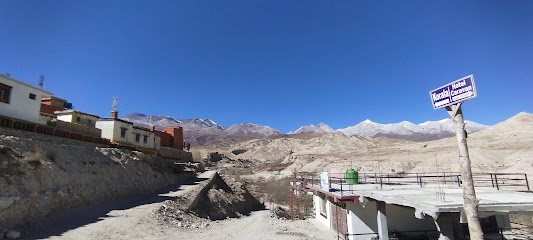
Phendeling
6.5 km
Discover Phendeling in Chhonhup - where every dish tells a story through authentic flavors and warm hospitality.

The Kailash Hotel, Tsarang, Mustang, Nepal
10.2 km
Experience authentic Nepalese cuisine with breathtaking views at The Kailash Hotel in Tsarang, Mustang - a must-visit culinary destination.
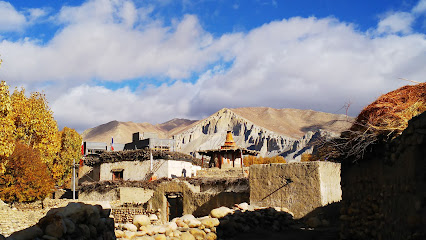
Chusang
32.8 km
Experience authentic Nepali cuisine in Chusang's charming restaurant, where every dish tells a story amidst breathtaking Himalayan scenery.
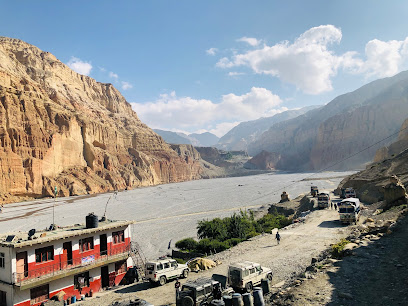
Pema Restaurant
40.6 km
Experience authentic Nepali flavors at Pema Restaurant in Kagbeni – where every meal is a celebration of local culinary traditions.
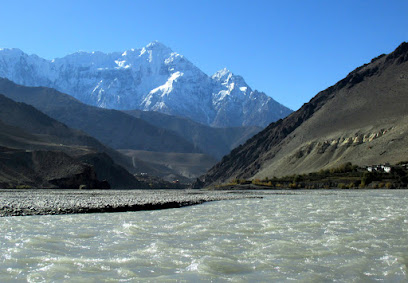
Phedi Restaurant
41.6 km
Experience the best of Nepali cuisine amidst stunning mountain views at Phedi Restaurant in Muktinath.
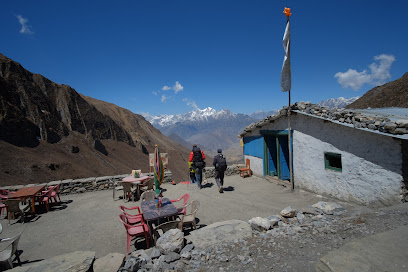
Hotel Mustang Gateway & Yac Donald's Restaurant
42.0 km
Discover unparalleled comfort and delicious dining at Hotel Mustang Gateway & Yac Donald's Restaurant in scenic Kagbeni, Nepal.
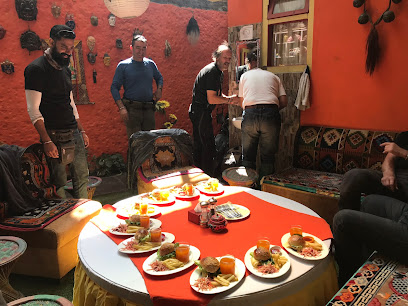
Phalyak
44.6 km
Discover authentic Nepali flavors at Phalyak Restaurant in Kagbeni – where tradition meets taste amidst stunning Himalayan scenery.
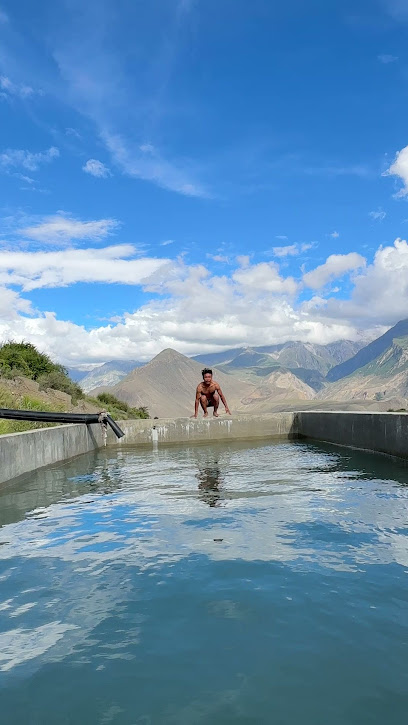
Arnap Restaurant and Thakali Bancha Ghar
49.1 km
Discover authentic Nepali flavors at Arnap Restaurant and Thakali Bancha Ghar in Jomsom – where tradition meets taste.
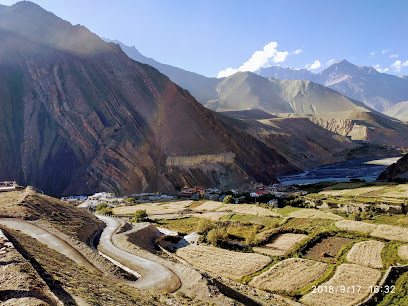
Bagaincha Cafe and Garden Restaurant
49.2 km
Discover delightful local flavors at Bagaincha Cafe & Garden Restaurant in Jomsom – a serene dining experience amidst stunning mountain views.
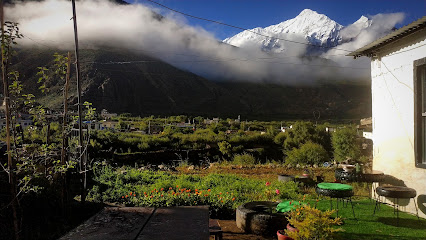
Hotel Holiday Home & Resturant
50.1 km
Indulge in exquisite Nepalese dishes at Hotel Holiday Home & Restaurant in Jomsom – where tradition meets taste amidst breathtaking mountain views.
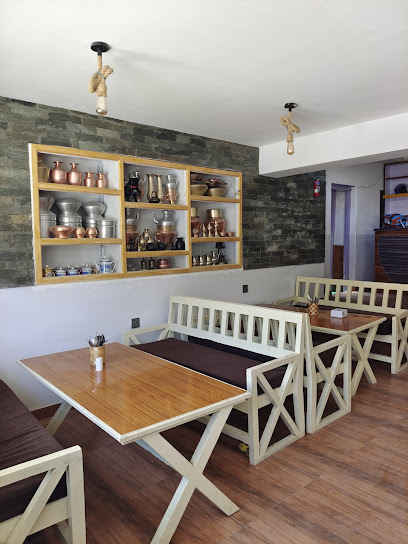
Hotel Eagle Claw View Point Resturant
50.3 km
Experience breathtaking views and authentic flavors at Hotel Eagle Claw View Point Restaurant in Jomsom - where every meal is a feast for your senses.
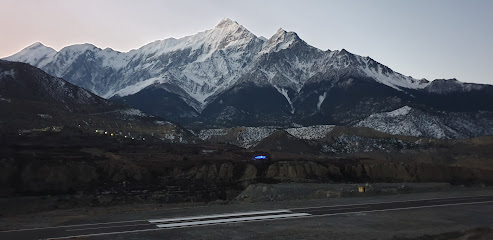
Beautiful THINI Restaurant, Thini
50.9 km
Experience authentic Nepalese cuisine amidst breathtaking views at Beautiful THINI Restaurant in Jomsom.
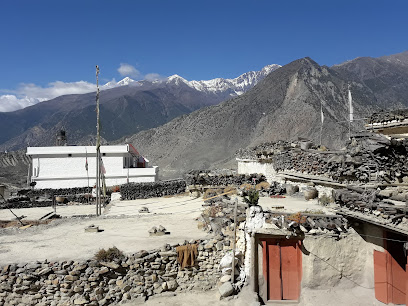
Dhumba Lake Restaurant & Ticket Counter
52.0 km
Experience authentic Nepalese cuisine at Dhumba Lake Restaurant while soaking in breathtaking views near Jomsom's serene lakeside.
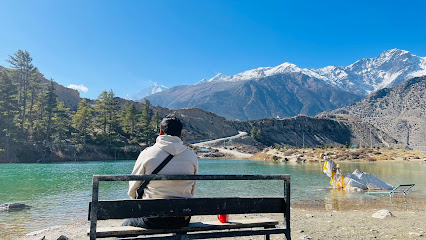
Markets, malls and hidden boutiques
Mystique Gift Shop
0.1 km
Explore the enchanting Mystique Gift Shop in Lo Manthang for unique handcrafted treasures and authentic Nepali souvenirs.
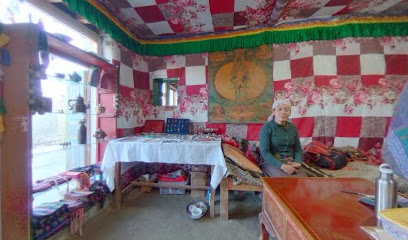
Pema Wangyal Shop
19.1 km
Explore the vibrant Pema Wangyal Shop in Surkhang for authentic local goods and a true taste of Nepalese culture.

Panorama Inn Mustang Nepal
40.6 km
Experience the enchanting beauty of Mustang at Panorama Inn, where adventure meets tranquility in a serene resort setting.
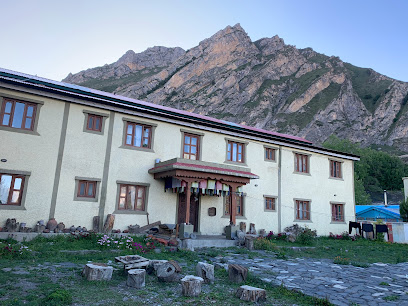
Kagbeni mustang
41.9 km
Explore Kagbeni, a hidden gem in the Mustang region, where ancient culture meets breathtaking Himalayan landscapes.
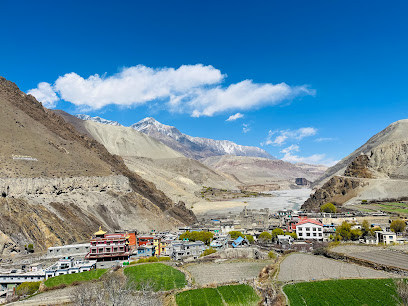
New Bishal Trader's
41.9 km
Explore the vibrant local culture at New Bishal Trader's, your go-to general store in Kagbeni for authentic souvenirs and essential travel supplies.
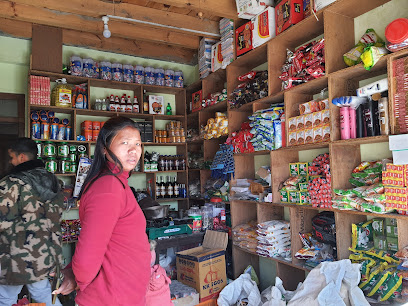
AA sports
49.1 km
AA Sports in Jomsom: Your adventure begins with the best sporting goods and expert advice in the heart of the Himalayas.
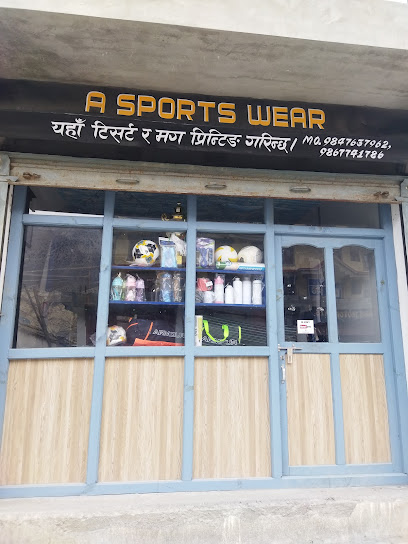
Shreeraaj handmade shop
49.3 km
Discover unique, handcrafted fashion accessories at Shreeraaj Handmade Shop in Jomsom, blending tradition with contemporary elegance.
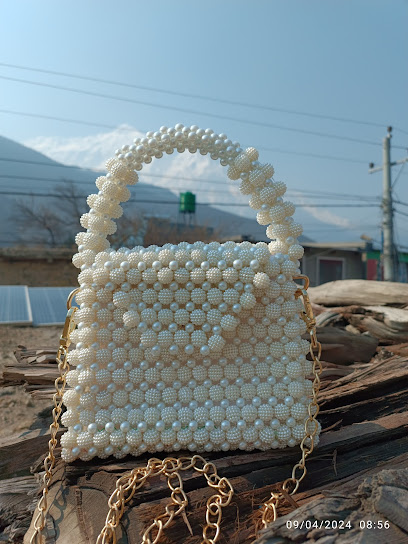
Our mustang fancy jomsom
49.3 km
Discover the vibrant blend of traditional and modern women's fashion at Our Mustang Fancy Jomsom in the heart of Nepal.
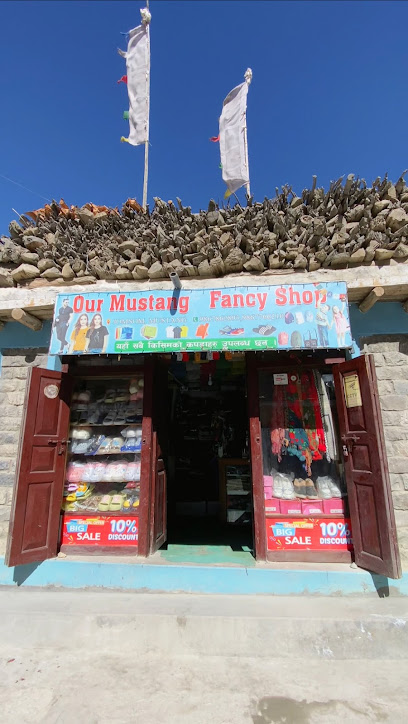
People’s plaza
49.3 km
Experience the heart of Jomsom at People's Plaza, a vibrant shopping destination offering local crafts, delicious cuisine, and a taste of Nepalese culture.

Jhakash
49.6 km
Explore the charm of Jhakash in Jomsom, where unique local crafts meet authentic Nepali culture for an unforgettable shopping experience.

Himalayan Java Gallery Cafe
49.8 km
Experience the perfect blend of coffee, art, and live music at Himalayan Java Gallery Cafe in Jomsom, Mustang.
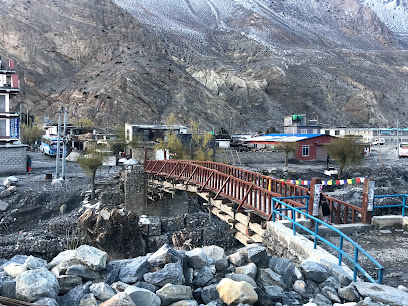
Jogidha
49.9 km
Explore the vibrant store of Jogidha in Nepal, a treasure trove of local crafts and unique souvenirs that reflect the rich culture.
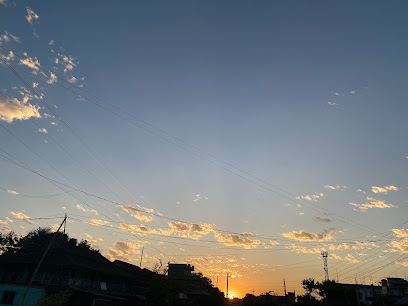
Korala Fancy Shop Center
49.9 km
Experience the charm of Nepali fashion at Korala Fancy Shop Center in Jomsom, where every piece tells a story.
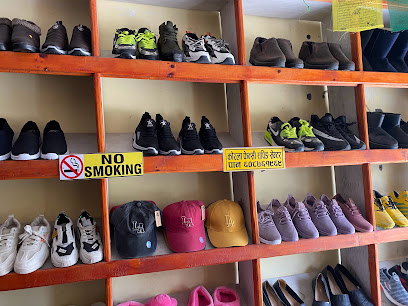
Mustang Eco Museum
50.3 km
Explore the rich heritage and ecological wonders of the Mustang Eco Museum, a hidden gem in the heart of Jomsom, Nepal.

Kushal Dairy & grocery store
51.4 km
Discover local flavors and fresh produce at Kushal Dairy & Grocery Store in Syang, a must-visit for every traveler seeking authentic experiences.
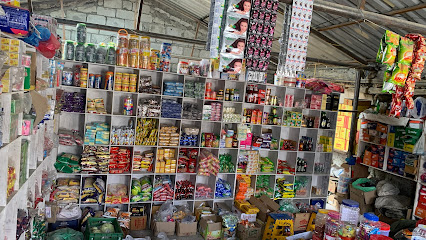
Essential bars & hidden hideouts
Sunrise restaurant & BAR
0.3 km
Discover the vibrant flavors of Lo Manthang at Sunrise Restaurant & Bar, where local cuisine meets breathtaking views in a charming atmosphere.

Rooftop guesthouse and restaurant
10.5 km
Discover breathtaking views and authentic flavors at the Rooftop Guesthouse and Restaurant in Surkhang, a unique blend of comfort and culture.
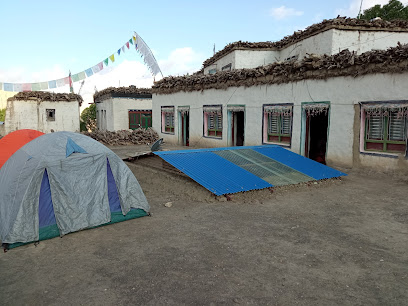
धुम्बा ताल जोमसोम
48.7 km
Explore the tranquility of धुम्बा ताल in Jomsom, a serene lake surrounded by majestic mountains and rich local culture.

Cravend Restro and Bar
49.9 km
Experience the flavors of Nepal at Cravend Restro and Bar, where delicious food, refreshing drinks, and stunning mountain views await you.

KINGDOM RESTRO BAR & LIVE MUSIC (THAKALI BHANCHA GHAR)
50.1 km
Discover the essence of Jomsom at Kingdom Restro Bar & Live Music, where authentic Nepalese cuisine meets vibrant nightlife and live entertainment.
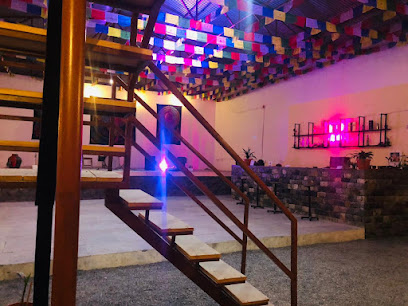
Dhaulagiri Lodge and Restaurant
81.7 km
Discover the charm of Dhaulagiri Lodge and Restaurant, a serene retreat in Tatopani offering delightful local cuisine and stunning mountain views.
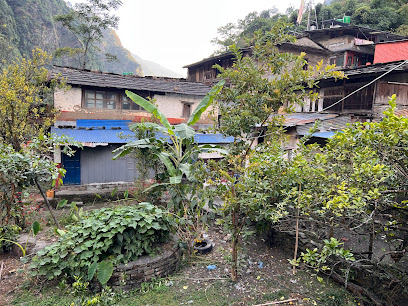
Black and white bar and music venue
87.0 km
Discover the lively Black and White Bar in Machhapuchchhre, where vibrant music and local flavors create an unforgettable nightlife experience.

Man maiju chok
88.7 km
Discover the vibrant nightlife of Kathmandu at Man Maiju Chok, a lively bar offering local drinks and a friendly atmosphere.

Deepak's cottage
88.7 km
Discover Deepak's Cottage in Lwang Ghalel, a serene bar offering breathtaking views and a taste of local culture amidst the stunning Himalayan landscape.

sss Trade suppliers
89.1 km
Discover Namarjung's vibrant bar scene at SSS Trade Suppliers, where friendly atmosphere and delightful drinks await every visitor.
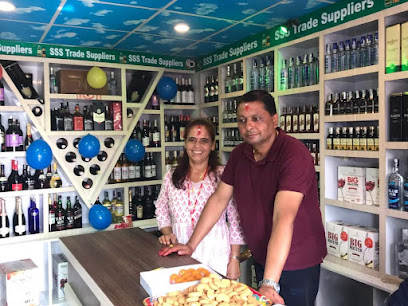
Mamta
89.1 km
Experience the vibrant nightlife at Mamta, a cozy bar in Namarjung offering a delightful selection of beverages in a welcoming atmosphere.

Rabin bhujel
89.1 km
Discover the charm of Rabin Bhujel, a cozy bar in Namarjung, offering a perfect blend of local drinks and warm hospitality for every traveler.

Lamahi Dang
89.1 km
Experience the lively atmosphere of Lamahi Dang, a vibrant bar in Namarjung where locals and tourists come together to unwind and socialize.
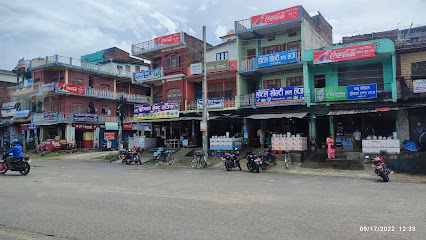
Koshi
89.1 km
Experience the vibrant nightlife at Koshi, a bar in Namarjung offering delightful drinks and a cozy atmosphere for every traveler.

Sumit giri
89.1 km
Discover the vibrant spirit of Namarjung at Sumit Giri, where delightful drinks and local culture blend seamlessly.




